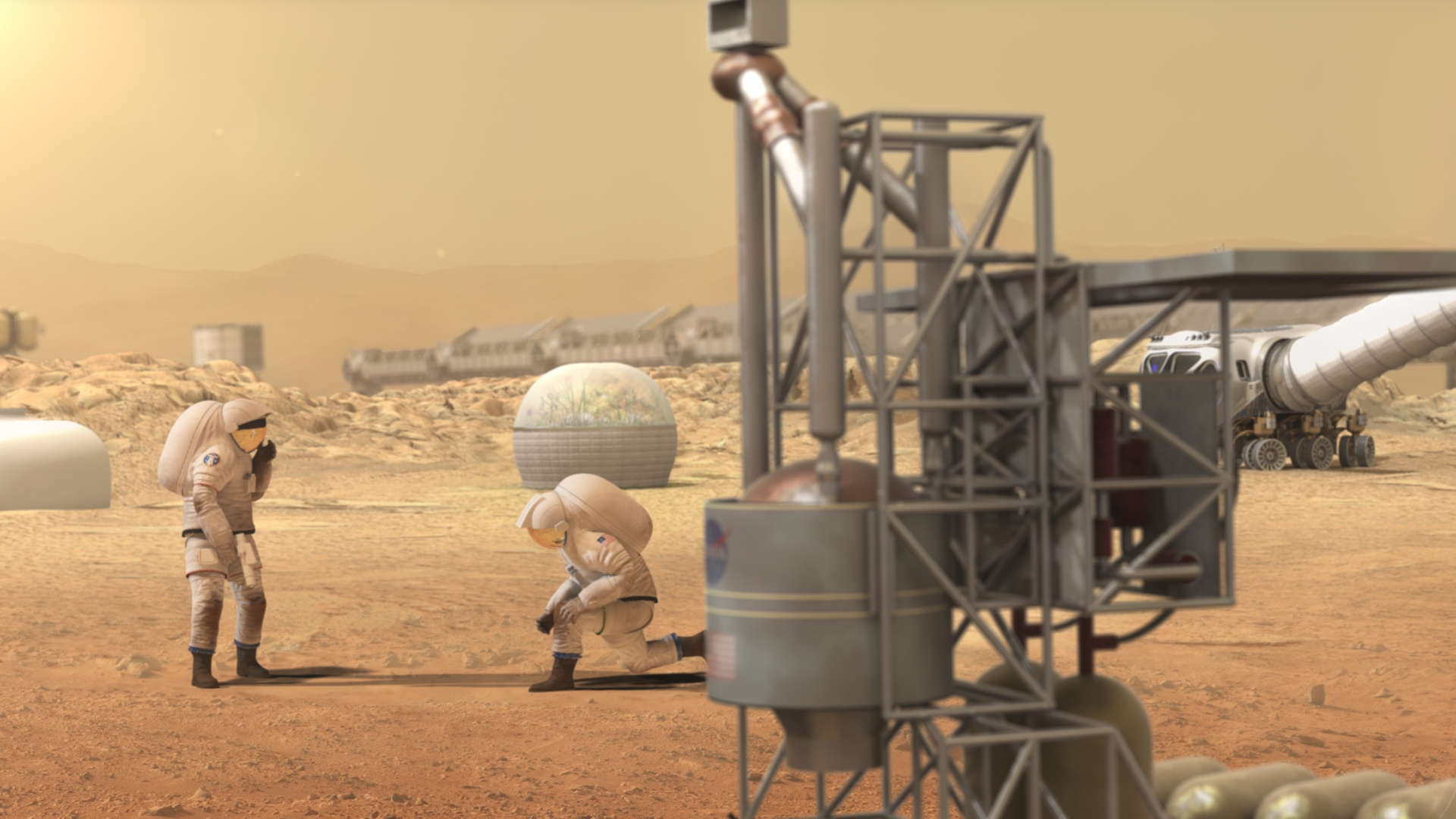Plans for a manned mission to Mars are on the news just about every other day. But for now, such a manned mission seems impossible. However, Portuguese scientists have brought us one step closer taking people to Mars.
One of the
main problems when travelling to Mars, and for space travel in general, is
fuel. Of course, fuel is absolutely necessary to travel around in space, but
it’s also extremely heavy. For example, the fuel that the space shuttle needed
was almost 20 times as heavy as the space shuttle itself. And the space
shuttles always stayed relatively close to earth. Imagine the fuel a spacecraft
flying to Mars, landing there, launching again, and travelling back to earth
would need. It’s impossible to build such a rocket, let alone launch it. Because
of this, space engineers thought for a long time that it would be impossible to
have people return from Mars, making a trip to Mars a lifelong mission. But
now, Vasco Gama and his team at the university of Lisbon have made an
interesting discovery that could change this.
Don't bring it, make it!
Don't bring it, make it!
 This
discovery has everything to do with the atmosphere of Mars. Martian air
contains roughly the same stuff; oxygen, carbon dioxide, nitrogen, as the earth’s
atmosphere. The only difference is that the proportions are vastly different.
Mars’s atmosphere consists of over 95 percent carbon dioxide, while on earth,
that’s just 0,04 percent. Gama and his team have come up with a clever
technique to make that high percentage of carbon dioxide on Mars useful. They
have found a way to turn carbon dioxide into oxygen and carbon monoxide using a
special substance called a plasma. The oxygen can of course be breathed by the
astronauts staying on Mars, but it can also be used as rocket fuel, in
combination with carbon monoxide. This means that the astronauts can make fuel
for their rocket while they are on Mars, so they don’t need to bring it along
with them. With this new technique, we can go to Mars with lighter and thus
safer rockets, bringing the chances of a manned mission to Mars one step
closer.
This
discovery has everything to do with the atmosphere of Mars. Martian air
contains roughly the same stuff; oxygen, carbon dioxide, nitrogen, as the earth’s
atmosphere. The only difference is that the proportions are vastly different.
Mars’s atmosphere consists of over 95 percent carbon dioxide, while on earth,
that’s just 0,04 percent. Gama and his team have come up with a clever
technique to make that high percentage of carbon dioxide on Mars useful. They
have found a way to turn carbon dioxide into oxygen and carbon monoxide using a
special substance called a plasma. The oxygen can of course be breathed by the
astronauts staying on Mars, but it can also be used as rocket fuel, in
combination with carbon monoxide. This means that the astronauts can make fuel
for their rocket while they are on Mars, so they don’t need to bring it along
with them. With this new technique, we can go to Mars with lighter and thus
safer rockets, bringing the chances of a manned mission to Mars one step
closer.
Earth can tag along as well
But that’s
not everything. On earth, we’re currently facing a great problem in the shape
of global warming. This is caused by carbon dioxide emissions, which have
greatly raised the amount of carbon dioxide in the air. With this plasma
technique discovered by Gama and his team, we might be able to change some of
our ‘own’ carbon dioxide into oxygen. However, there are some challenges when
it comes to this. For example, the amount of carbon dioxide on earth is way
lower than the amount on Mars, making it harder to ‘find’ the molecules in the
air. More research has to be done to make this new technique properly useful on
both earth and Mars, but the first step has been taken.
Sources:
If you want to read more about astronomy, click here.

No comments:
Post a Comment
Great that you want to comment! Please write something relevant and non-offending.